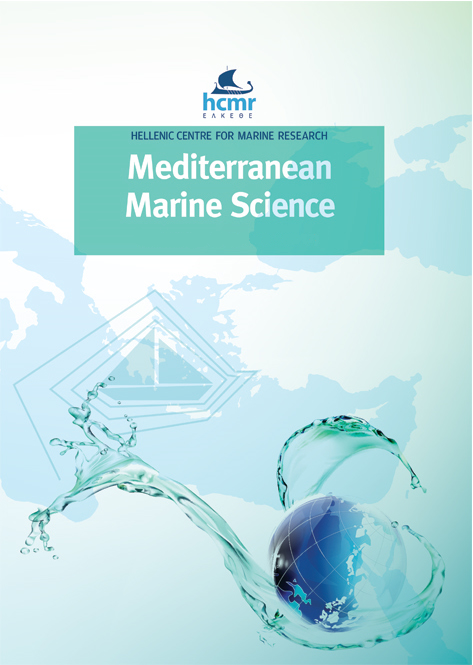Factors affecting Oithona nana and Oithona similis along a salinity gradient

Abstract
Spatial and temporal variations of reproduction variables of the two cyclopoid copepods Oithona nana Giesbrecht, 1893 and Oithona similis Claus, 1866 were evaluated monthly from September 2007 to August 2008 in four ponds at different salinities in the solar saltern of Sfax, Tunisia, under hypersaline conditions. Along the salinity gradient the abundance of O. nana and O. similis declined from 14,900 ± 15,200 ind. m-3 (A1) to 6,800 ± 7,200 (C31) and from 13,800 ± 17,100 ind. m-3 (A1) to 3,700 ± 5,800 (C31), respectively. The findings showed that the abundance of these Oithona species, particularly the ovigerous females, was positively correlated with the abundance of Diatomeae, and negatively correlated with salinity. The egg production rate (EPR), the egg diameter, the clutch size, as well as the cephalothorax length of mature females, were all negatively correlated with salinity and positively correlated with the abundance of Diatomeae. Along the existing salinity gradient, the EPR decreased from 4.7 ± 0.39 (A1) to 3.2 ± 0.13 (C31) eggs female-1 day-1 and from 5.19 ± 0.46 (A1) to 3.66 ± 0.05 (C31) eggs female-1 day-1 for O. nana and O. similis, respectively, and this could mainly be attributed to the hypersaline conditions. The positive relationship between the abundance of Diatomeae with all traits shows, that these may be a vital component of the diet for the investigated species. The reduction of body size of Oithona along the salinity gradient demonstrates that such a character could mainly be due to a network of causes, related with the confinement and not only to salinity.
Article Details
- How to Cite
-
ANNABI-TRABELSI, N., KOBBI-REBAI, R., AL-ENEZI, Y., ALI, M., SUBRAHMANYAM, M., BELMONTE, G., & AYADI, H. (2021). Factors affecting Oithona nana and Oithona similis along a salinity gradient. Mediterranean Marine Science, 22(3), 552–565. https://doi.org/10.12681/mms.24530
- Issue
- Vol. 22 No. 3 (2021)
- Section
- Research Article
Authors who publish with this journal agree to the following terms:
- Authors retain copyright and grant the journal right of first publication with the work simultaneously licensed under a Creative Commons Attribution Non-Commercial License that allows others to share the work with an acknowledgement of the work's authorship and initial publication in this journal.
- Authors are able to enter into separate, additional contractual arrangements for the non-exclusive distribution of the journal's published version of the work (e.g. post it to an institutional repository or publish it in a book), with an acknowledgement of its initial publication in this journal.
- Authors are permitted and encouraged to post their work online (preferably in institutional repositories or on their website) prior to and during the submission process, as it can lead to productive exchanges, as well as earlier and greater citation of published work (See The Effect of Open Access).





